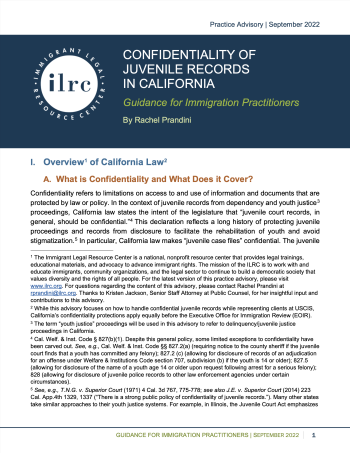Crimes & Immigration Law (SF)
Location: University of San Francisco School of Law, 2130 Fulton Street, San Francisco, CA 94117
Introduction to Removal Defense (SF)
Location: San Francisco State University – College of Extended Learning, 835 Market Street, 6th Floor, San Francisco, CA 94103
Motions to Suppress
The landscape of immigration enforcement involves ICE agents arresting families in their homes, expansive cooperation with local and state law enforcement, and sweeping surveillance of immigrant communities. The federal government is aggressively...
How a Private/Nonprofit Partnership Can Help Immigrants Obtain Post-Conviction Relief
This webinar will highlight an innovative pro bono model that ensures every immigrant has their full due process rights protected and no person is deported on the basis of an unconstitutional conviction. Led by Rose Cahn from the Immigrant Legal...
Extreme Hardship in Waivers
This webinar will provide an up-to-date overview of USCIS guidance on extreme hardship that took effect December 5, 2016. Panelists will review the factors outlined by USCIS as well as the legal standard required for a successful hardship waiver for...
Hardship in Immigration Law
This manual continues to be one of ILRC’s best-selling resources because it contains a unique combination of legal analysis and practical tips. Consisting of six chapters and extensive appendices, this indispensable guide thoroughly addresses how to...
Remedies and Strategies for Permanent Resident Clients
Protect your permanent resident clients from being removed under a deportation or inadmissibility ground using the expert analysis and framework for representation contained in this manual. Designed as a “how to” manual, we provide clear, concise and...
Introduction to Removal Defense (SF)
Are you new to immigration practice and want to be court-ready? Have you been representing people for years on affirmative cases, but afraid to appear in front of the immigration judge? Do you want a refresher on issues related to removal defense...

